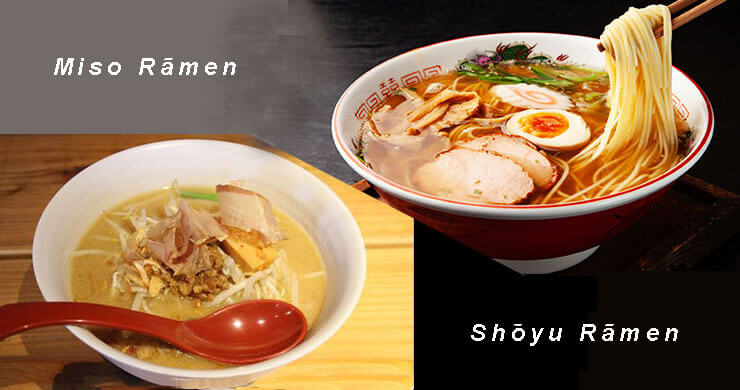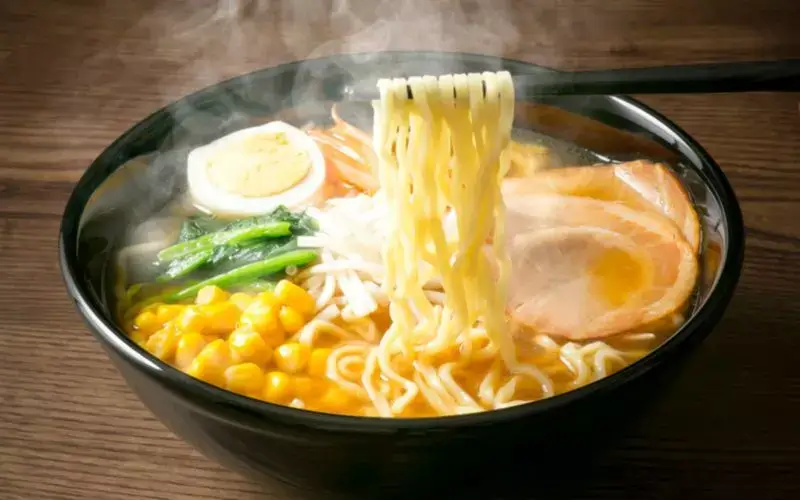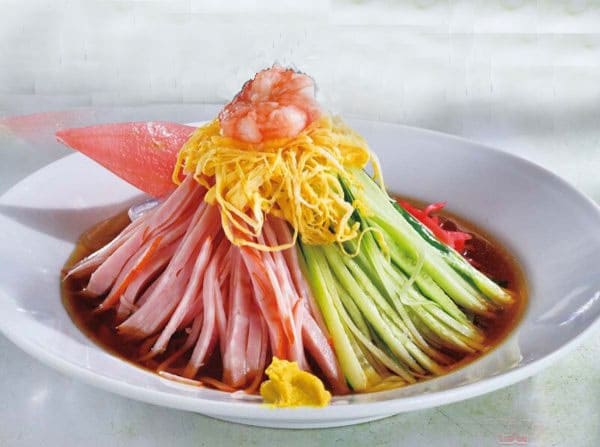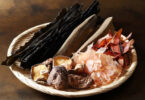Hi everyone how is it going? Today’s theme is ”Rāmen” which has been an international cuisine and typical “Cool Japan” nowadays.
According to the dictionary, it says (in Japanese cuisine) quick-cooking noodles, typically served in a broth with meat and vegetables.
I used to a rāman-lover, however, I havn’t eaten it for nearly 30 years since I’ve become a vegetarian, not a vegan though.
So I’ve looked for rāmen shops for vegetarian whenever I feel like to eating it, and I’ve enjoyed it, so let me talk to you how wonderful food is!
Contents
Why is Rāmen so popular with young and old alike?
Long noodles in steaming hot soup. In Japan, just about everyone loves ramen. Its shops can be found nationwide. One bowl costs from about 500 to 1,000 yen.
There are people in Japan who eat it almost every day. Fanatics actually eat not only a serving per day, but also three servings per day, according to gourmets or epicures.
The roots of it lie in China, but rāmen as we know it today developed independently in Japan.
Today, there are rāmen shops all over the country, resulting in tremendous varieties.
Wheat flour is the main ingredient of its noodles. The kind of flour used has a great impact on their flavour and texture.
Each chef has his or her own unique formula, some blend several types of wheat flour, while others mix in the kind of flour used for udon to give the noodles a chewier texture.
To ensure that the noodles will go perfectly with the soup, their thickness and length are carefully calibrated.
The shop is considered to be the soul of rāmen, and its preparation also involves innovative approaches that vary from one shop to another.
The soup stock is made from a variety of ingredients, such as chicken bones, pig bones and vegetables. Seafood ingredients, including dried sardines, konbu seaweed and dried bonito, are also often used in the broth.
To make the soup, the stock is seasoned with a special base made from soy sauce, miso or salt.
The diverse and distinctive varieties are sustained by the commitment of each chef.
History of Ramen
It is a Japanese noodle dish that has its roots in Chinese cuisine. The word “ramen” is a Japanese borrowing of the Chinese word 拉麵 (lāmiàn), meaning ‘pulled noodles’.
The dish evolved from southern Chinese noodle dishes, reflecting the demographics of Chinese settlers in Yokohama in the early 20th century.
It gained popularity in Japan, especially during food shortages following World War II. In 1958, instant noodles were invented by Momofuku Ando, further popularizing the dish
.
Today, it is a cultural icon in Japan, with many regional varieties and a wide range of toppings. Ramen Museum New York also mentions that the first one was developed in 1926 by Wang Wen-chai, a Chinese chef who worked at a student-oriented diner in Hokkaido.
He created a lighter-tasting noodle dish with roast pork and scallions as toppings to cater to the Japanese palate.
The Great Kanto Earthquake of 1923 also contributed to the diversification of it, as many ramen chefs who lost their jobs in Tokyo moved to other regions and adapted their recipes to local ingredients and preferences.
It became “Japan nation ramen” because it was a cheap, filling, and delicious food that could be easily customized and enjoyed by people from different backgrounds and tastes.
What varieties of ramen which are most popular in Japan?
There are many types in Japan, each with its own broth, seasonings, and toppings.
★ Shoyu ramen: This is a soy sauce-based one that usually has a clear brown broth made from chicken or pork bones. It is often topped with sliced pork, scallions, bamboo shoots, and boiled eggs.
★ Miso ramen: This is a soybean paste-flavored one that usually has a rich, cloudy broth made from chicken or pork bones. It is often topped with ground pork, corn, bean sprouts, butter, and garlic.
★ Shio ramen: This is a salt-based one that usually has a clear, light-colored broth made from chicken, fish, or seaweed. It is often topped with sliced pork, scallions, seaweed, and kamaboko (fish cake).
★ Tonkotsu ramen: This is a pork bone broth one that usually has a thick, creamy, white broth made from boiling pork bones for hours. It is often topped with sliced pork, scallions, wood ear mushrooms, and sesame seeds.
★ Tsukemen: This is a dipping ramen that usually has thick noodles served separately from a concentrated broth. The broth is often made from fish or pork bones and flavored with soy sauce or vinegar.
The noodles are dipped into the broth before eating and can be topped with various ingredients such as sliced pork, boiled eggs, seaweed, and bamboo shoots.
There are also many regional variations in Japan, such as the spicy miso one of Hokkaido, the salt-flavored one of Hakodate, the thick and curly noodles in pork-and-niboshi broth of Kitakata, the soy-flavored chicken broth of Tokyo, the soy-flavored pork broth of Yokohama’s Ie-kei ramen, the soy sauce and pork bone broth of Wakayama, and the milky tonkotsu broth of Hakata.
★ Chilled ramen: When it’s hot or when you desire to eat cold ramen.
You can learn more about these regional ramen types from Japan Wonder Travel.
What’s Instant Ramen?
In Japan, there’s another major style of rāmen. Invented in 1958, it’s instant rāmen. It was so original and convenient that it soon became a huge hit.
Instant rāmen packaged in a disposable cup was introduced in 1971, and overseas production began two year later.
Today, 90 billion servings of instant are consumed each year around the world. It is now a global phenomenon, and it all started from the efforts and passion of people in Japan, the “Rāmen Nation“.
So shall we have a bowl of rāmen?
At the end, “Soba” and “Udon“, both of which are indispensable foods in Japan to visit, thanks















Leave a Comment